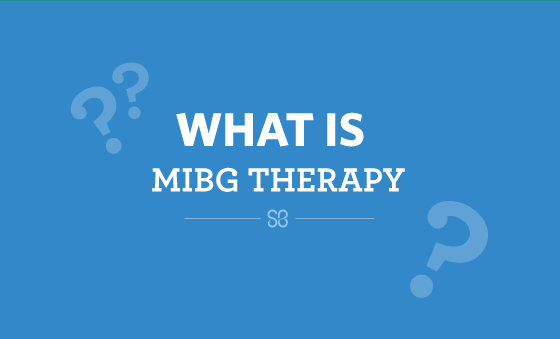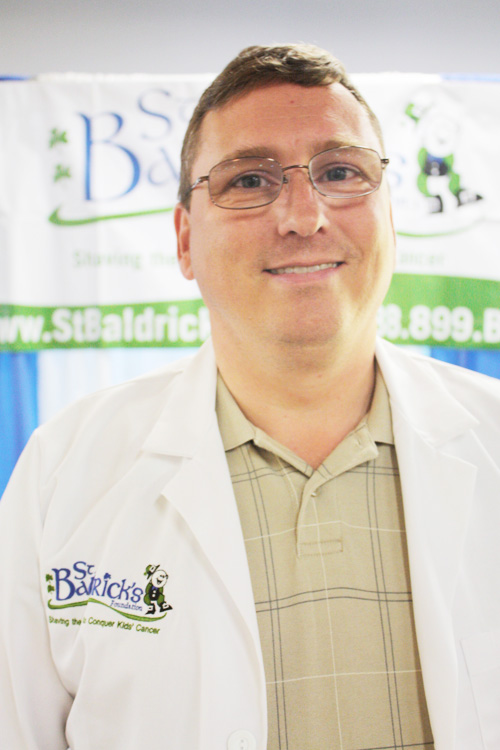
Current treatment options including chemotherapy, surgery, radiation therapy, and stem cell transplantation are powerful, but not powerful enough. New therapeutic options are needed.
MIBG is a molecule that is readily absorbed by neuroblastoma cells. By adding radioactive iodine to MIBG, this therapy can be delivered directly to the tumor, no matter where it is in the body.
UPDATE: Progress in MIBG Therapy Makes Treatment More Accessible for Kids With Neuroblastoma >
MIBG can be a safer therapy than traditional radiation therapy, as it delivers the radiation directly to the tumor and minimizes exposure to healthy tissues. Additionally, it can radiate metastatic tumors throughout the body in one treatment, which is much more difficult with traditional radiation therapy.

Dr. Michael Armstrong received an infrastructure grant from St. Baldrick’s that enables more kids to be treated on clinical trials.
“From a quality of life perspective, this treatment can be very well tolerated,” Dr. Armstrong said. “They receive one dose approximately every six weeks, which can be a little easier to manage than a chemotherapy schedule. Also, it is better tolerated and has fewer side effects than traditional chemotherapy agents, so it can keep active kids active.”
A child receiving MIBG therapy is given a radioactive dose of MIBG delivered through an infusion over a couple of hours. Then comes one of the most challenging parts of the treatment: the child must stay in a lead-lined room — alone — for approximately three days, or until their radioactive levels are safe.
In 2011, Duke University received a second St. Baldrick’s infrastructure grant to set up their Neuroblastoma Early Phase Clinical Trial Program. According to Dr. Armstrong, “One out of three kids who have been treated with MIBG showed response to it in early phase trials. We need to further study the use of MIBG in neuroblastoma to optimize outcomes.”
In the future, Dr. Armstrong and his team are looking forward to combining MIBG with other agents, such as chemotherapy, as a part of early phase clinical trials to see if this can improve cure rates.
“High-risk neuroblastoma is a devastating disease in desperate need of better therapies,” Dr. Armstrong said. “The only way to advance discoveries from the laboratory is through clinical trials. Generous support from the St. Baldrick’s Foundation has allowed us to establish a clinical research program in neuroblastoma and facilitate transitioning new discoveries into clinical care. By working together, we hope to improve outcomes for children with neuroblastoma.”
Read about 2012 Ambassador Justin’s experience with MIBG therapy.
Help St. Baldrick’s continue to fund this lifesaving treatment for kids with cancer. Make a donation or get involved.
Read more about the kids’ cancer research St. Baldrick’s is funding:

 SBF
Tweets »
SBF
Tweets »